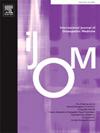评估美国骨科医学院骨科医学的观点、知识和行为:员工教育和认识变化研究
IF 1.5
4区 医学
Q2 MEDICINE, GENERAL & INTERNAL
引用次数: 0
摘要
背景学生完成培训的机构文化可能会极大地影响他们对骨科医学原则和使用骨科手法治疗(OMT)的职业认同和实践习惯。这是第一项评估机构文化、观点、知识、行为以及围绕骨科医学原则对机构员工进行教育干预的效果的研究。方法进行了一项横断面研究,通过在教育干预之前和之后 6 个月进行的两次调查来评估骨科医学知识、观点和行为。教育干预包括 7 个在线异步模块。基线调查(PRE)和 6 个月跟踪调查(POST)被视为独立样本,因为并非所有研究对象都参加了教育干预。为初步数据集生成了或然率表,以评估调查回答之间的关系。对这些关系进行了卡方检验(Chi-square Test),如果不符合卡方检验的假设条件,则采用费雪精确检验(Fisher Exact Tests)。我们还进行了方差分析和独立 t 检验,以评估不同就业类别和背景之间的得分差异。在事后调查中,45/94(47.9%)的受访者表示他们参加了教育模块。培训结束后,更多的参与者同意或非常同意他们了解 OPP 的基本原理 [PRE: 80/95 (84.2 %); POST: 88/92 (95.7 %); P = 0.01]以及美国骨科医学的起源和历史 [PRE: 62/94 (66 %); POST: 79/92 (85.9 %); P = 0.003]。在行政人员/工作人员类别中,在研究结束时有过整骨疗法经历的人数明显增多 [PRE: 38/48 (79.2 %); POST: 45/48 (93.8 %); P = 0.04]。能够正确识别 OMT 所影响的身体系统的参与者明显增多 [前期:68/96 (70.8%);后期:79/93 (84.9%);P = 0.01]。教师们计划在今后的教学[37/40 (92.5%)]和笔试项目[25/40 (62.5%)]中融入整骨疗法原则。最后,参加培训的员工[50/51 (98%)]表示,培训增强了他们与他人讨论骨病治疗原则与实践(OPP)的信心,并认为培训提高了他们在工作中对 OPP 的认识[46/51 (90%)]。对教育实践的启示--骨科治疗原则的教育干预对骨科治疗机构员工有关骨科治疗原则和实践的观点、知识和行为产生了积极影响。-为员工提供骨科治疗原则方面的集中培训可能会减少骨科医疗机构内部的误解。本文章由计算机程序翻译,如有差异,请以英文原文为准。
Evaluating perspectives, knowledge and behaviors of osteopathic medicine in a United States osteopathic medical school: A study in employee education and changes in understanding
Background
The institutional culture where students complete training may significantly impact their professional identity and practice habits related to osteopathic medicine principles and the use of Osteopathic Manipulative Treatment (OMT). This is the first study to evaluate institutional culture, perspectives, knowledge, behaviors, and the effect of an educational intervention among an institution's employees surrounding the principles of osteopathic medicine.
Objective
To explore the impact of a standardized educational intervention in osteopathic medicine for employees in promoting greater integration of osteopathic principles and practice into our institutional culture at a single multi-campus institution..
Methods
A cross-sectional study was conducted to assess osteopathic knowledge, perspectives, and behaviors through two surveys provided before and 6 months after an educational intervention. The educational intervention consisted of 7 online, asynchronous modules. A baseline (PRE) survey and 6-month follow-up (POST) were treated as independent samples, as not all study respondents participated in the educational intervention. Contingency tables were generated for the preliminary data set to assess the relationships among survey responses. Chi-square tests were conducted to test relationships and Fisher Exact Tests employed when assumptions for the chi-square test were not met. Analyses of variance and independent t-tests were conducted to evaluate score differences across different employment categories and backgrounds.
Results
All employees were invited to participate in the study, 96/370 (25.9 %) completed the PRE and 94/370 (25.4 %) completed the POST surveys. In the POST survey, 45/94 (47.9 %) of respondents indicated they participated in the educational modules. After the training, a greater number of participants agreed or strongly agreed that they understand the fundamentals of OPP [PRE: 80/95 (84.2 %); POST: 88/92 (95.7 %); P = 0.01] and the origins and history of osteopathic medicine in the United States [PRE: 62/94 (66 %); POST: 79/92 (85.9 %); P = 0.003]. Within the administrators/staff category, significantly more had experienced OMT at the end of the study [PRE: 38/48 (79.2 %); POST: 45/48 (93.8 %); P = 0.04]. There were significantly more participants who correctly identified body systems impacted by OMT [PRE: 68/96 (70.8 %); POST: 79/93 (84.9 %); P = 0.01]. Faculty planned to integrate osteopathic principles into their teaching [37/40 (92.5 %)] and written exam items [25/40 (62.5 %)] in the future. Finally, employee participants in the training [50/51 (98 %)] reported an impact on their confidence in discussing Osteopathic Principles and Practice (OPP) with others, and believed the training increased their awareness of OPP in their work [46/51 (90 %)].
Conclusions
An educational intervention positively impacted employees’ perspectives, knowledge, and behaviors related to OPP at a multi-campus, osteopathic institution. Enhanced engagement with institutional osteopathic culture fosters an informed workforce, and may influence student engagement with OPP in their future practice.
Implications for educational practice
- •An educational intervention in osteopathic principles positively impacts the perspectives, knowledge, and behaviors of employees of an osteopathic institution in relation to Osteopathic Principles and Practice.
- •Providing focused training in osteopathic principles to employees may result in fewer misunderstandings within osteopathic organizations.
- •Employees trained in osteopathic principles may provide more consistent public messaging, enhancing public awareness about the osteopathic medical profession.
- •Institutions who seek to increase employee knowledge about osteopathic principles may influence student engagement with osteopathic principles and osteopathic manipulative treatment, furthering the distinctiveness of osteopathic medical practice.
求助全文
通过发布文献求助,成功后即可免费获取论文全文。
去求助
来源期刊
CiteScore
2.20
自引率
36.80%
发文量
42
审稿时长
3 months
期刊介绍:
The International Journal of Osteopathic Medicine is a peer-reviewed journal that provides for the publication of high quality research articles and review papers that are as broad as the many disciplines that influence and underpin the principles and practice of osteopathic medicine. Particular emphasis is given to basic science research, clinical epidemiology and health social science in relation to osteopathy and neuromusculoskeletal medicine.
The Editorial Board encourages submission of articles based on both quantitative and qualitative research designs. The Editorial Board also aims to provide a forum for discourse and debate on any aspect of osteopathy and neuromusculoskeletal medicine with the aim of critically evaluating existing practices in regard to the diagnosis, treatment and management of patients with neuromusculoskeletal disorders and somatic dysfunction. All manuscripts submitted to the IJOM are subject to a blinded review process. The categories currently available for publication include reports of original research, review papers, commentaries and articles related to clinical practice, including case reports. Further details can be found in the IJOM Instructions for Authors. Manuscripts are accepted for publication with the understanding that no substantial part has been, or will be published elsewhere.

 求助内容:
求助内容: 应助结果提醒方式:
应助结果提醒方式:


